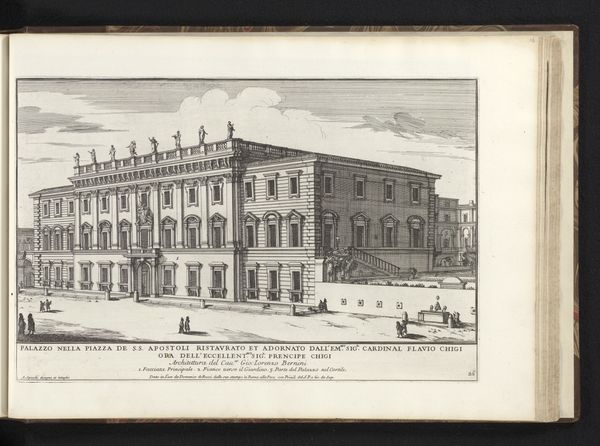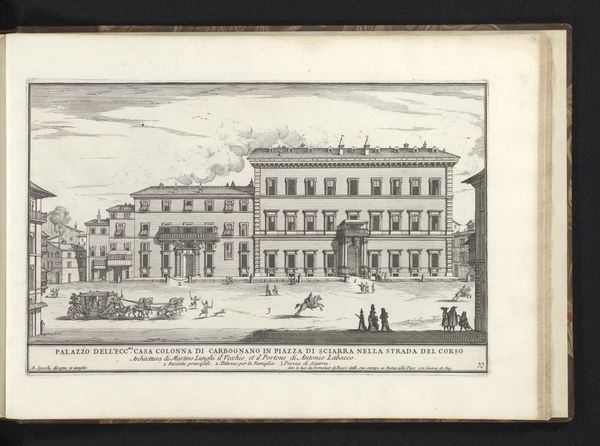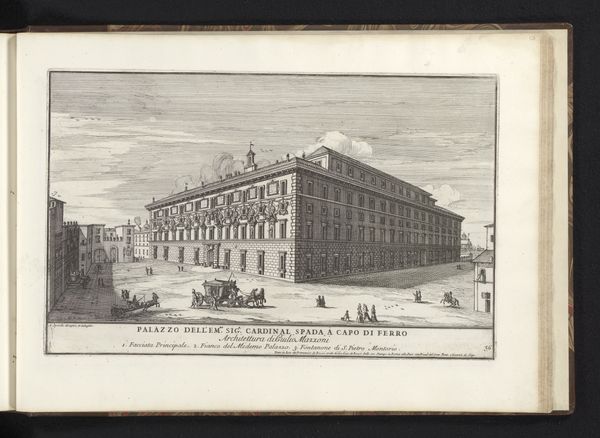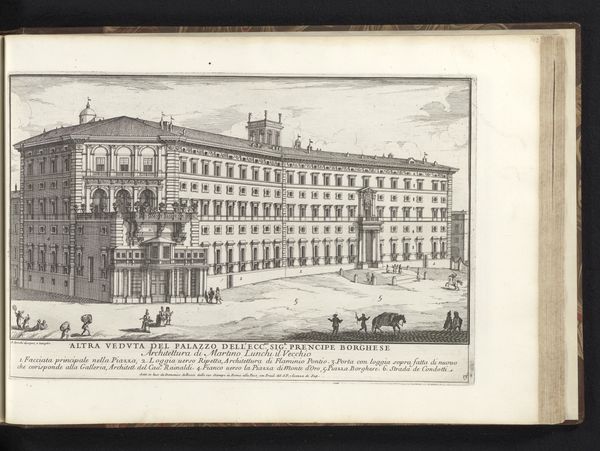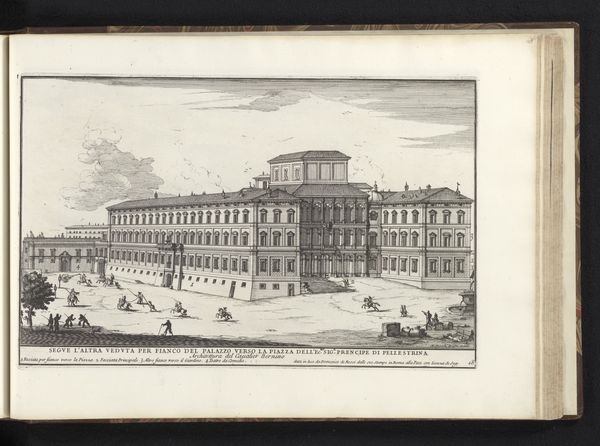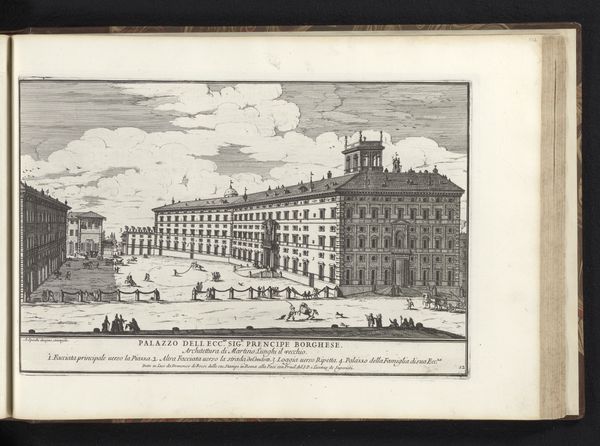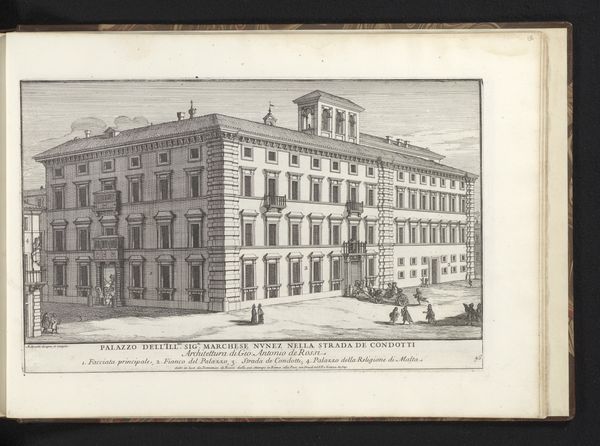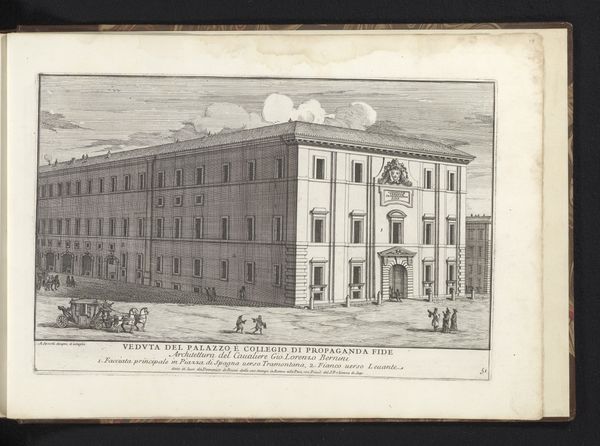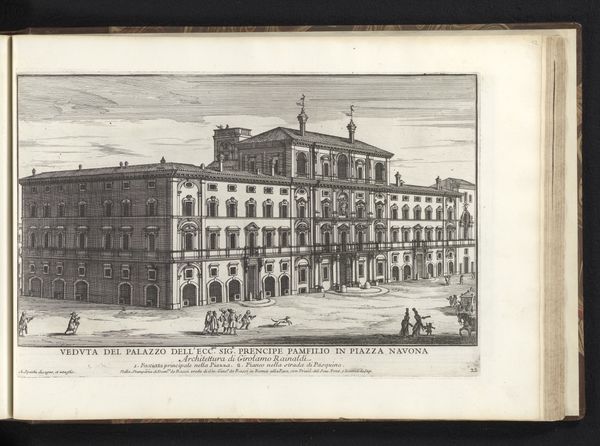
print, engraving, architecture
#
baroque
# print
#
line
#
cityscape
#
engraving
#
architecture
#
realism
Dimensions: height 215 mm, width 329 mm
Copyright: Rijks Museum: Open Domain
Curator: Well, hello there. I'm thrilled to share Alessandro Specchi's 1699 print, "Palazzo Doria Pamphilj te Rome" with you. It’s an engraving that captures the architectural grandeur of the palazzo. Editor: My first thought? Formidable. It exudes power, doesn't it? All those orderly windows, that central cupola—it feels like a statement of authority. Curator: Absolutely. And look at how Specchi uses line—clean, precise. Each etched stroke defines the palazzo's monumental façade and sprawling urban setting. It's not just a building; it's a piece of urban design captured with a distinctly Baroque flair. Editor: The symbolism here is layered, I think. The palace as a symbol of earthly power mirrored by the religious assertion of that dome—both held up by all those repeating window shapes that speak to rank and structure and social place. And that vast piazza. That is space defined and dominated by this palazzo. Curator: That's it, really. But do you feel any sense of *lived experience* looking at the etching? It feels very detached from what daily life in the space would be. Editor: True, this isn't some bustling street scene but I do think we feel how a person’s identity at that time could get so tangled up with institutions, status and appearances... and this artwork perfectly portrays that binding connection between self and society. The clarity of the line style reminds me of paperwork, of bureaucratic inscription somehow. Curator: It’s interesting to me how Specchi highlights a blend of realism and idealization within this engraving—the figures scattered in the piazza animate it, though they also shrink in the presence of that imposing building, don't you think? Editor: Precisely! They reinforce the visual narrative of control and command. Those tiny figures give it an epic scale—it hints at narratives about the culture itself, all captured through its visual shorthand. This image speaks to a past time of visual order and, well, powerful authority. Curator: What remains with me is Specchi's capacity to translate grand scale into such intricate detail, reflecting an era obsessed with precision and prestige—not bad at all for a work printed over 300 years ago! Editor: Yes. A powerful place visualized through its constructed form! A fascinating time capsule offering endless interpretative depth for those willing to explore it further.
Comments
No comments
Be the first to comment and join the conversation on the ultimate creative platform.

